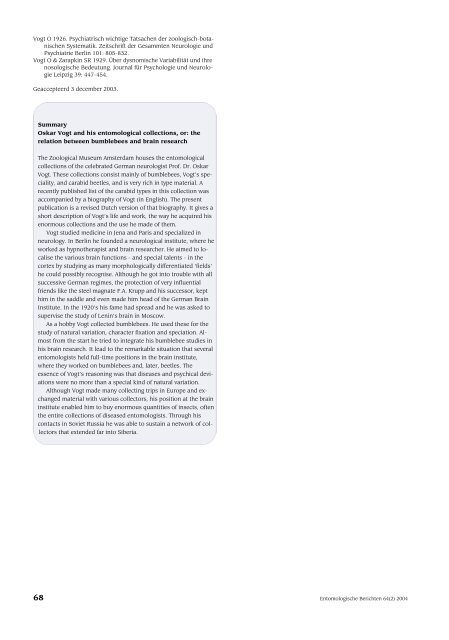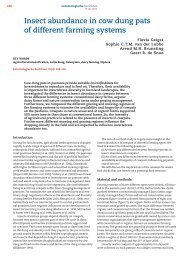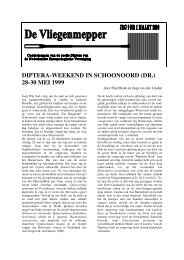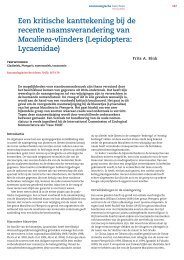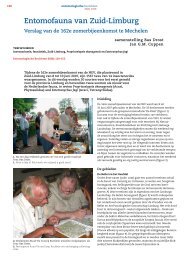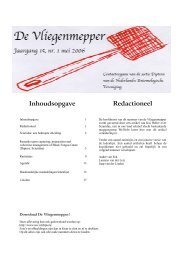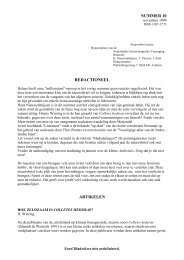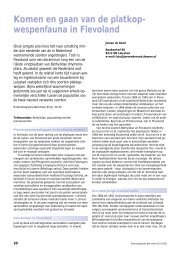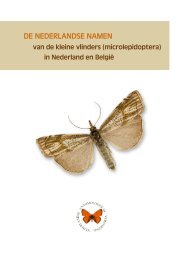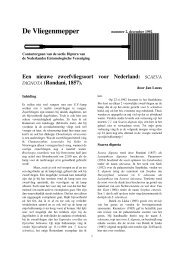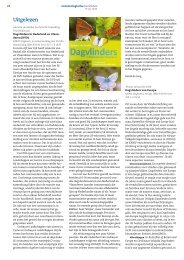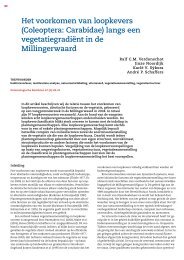Oskar Vogt en zijn entomologische collecties - Nederlandse ...
Oskar Vogt en zijn entomologische collecties - Nederlandse ...
Oskar Vogt en zijn entomologische collecties - Nederlandse ...
You also want an ePaper? Increase the reach of your titles
YUMPU automatically turns print PDFs into web optimized ePapers that Google loves.
<strong>Vogt</strong> O 1926. Psychiatrisch wichtige Tatsach<strong>en</strong> der zoologisch-botanisch<strong>en</strong><br />
Systematik. Zeitschrift der Gesammt<strong>en</strong> Neurologie und<br />
Psychiatrie Berlin 101: 805-832.<br />
<strong>Vogt</strong> O & Zarapkin SR 1929. Über dysnomische Variabilität und ihre<br />
nosologische Bedeutung. Journal für Psychologie und Neurologie<br />
Leipzig 39: 447-454.<br />
Geaccepteerd 3 december 2003.<br />
Summary<br />
<strong>Oskar</strong> <strong>Vogt</strong> and his <strong>en</strong>tomological collections, or: the<br />
relation betwe<strong>en</strong> bumblebees and brain research<br />
The Zoological Museum Amsterdam houses the <strong>en</strong>tomological<br />
collections of the celebrated German neurologist Prof. Dr. <strong>Oskar</strong><br />
<strong>Vogt</strong>. These collections consist mainly of bumblebees, <strong>Vogt</strong>’s speciality,<br />
and carabid beetles, and is very rich in type material. A<br />
rec<strong>en</strong>tly published list of the carabid types in this collection was<br />
accompanied by a biography of <strong>Vogt</strong> (in English). The pres<strong>en</strong>t<br />
publication is a revised Dutch version of that biography. It gives a<br />
short description of <strong>Vogt</strong>’s life and work, the way he acquired his<br />
<strong>en</strong>ormous collections and the use he made of them.<br />
<strong>Vogt</strong> studied medicine in J<strong>en</strong>a and Paris and specialized in<br />
neurology. In Berlin he founded a neurological institute, where he<br />
worked as hypnotherapist and brain researcher. He aimed to localise<br />
the various brain functions - and special tal<strong>en</strong>ts - in the<br />
cortex by studying as many morphologically differ<strong>en</strong>tiated ‘fields’<br />
he could possibly recognise. Although he got into trouble with all<br />
successive German regimes, the protection of very influ<strong>en</strong>tial<br />
fri<strong>en</strong>ds like the steel magnate F.A. Krupp and his successor, kept<br />
him in the saddle and ev<strong>en</strong> made him head of the German Brain<br />
Institute. In the 1920’s his fame had spread and he was asked to<br />
supervise the study of L<strong>en</strong>in’s brain in Moscow.<br />
As a hobby <strong>Vogt</strong> collected bumblebees. He used these for the<br />
study of natural variation, character fixation and speciation. Almost<br />
from the start he tried to integrate his bumblebee studies in<br />
his brain research. It lead to the remarkable situation that several<br />
<strong>en</strong>tomologists held full-time positions in the brain institute,<br />
where they worked on bumblebees and, later, beetles. The<br />
ess<strong>en</strong>ce of <strong>Vogt</strong>’s reasoning was that diseases and psychical deviations<br />
were no more than a special kind of natural variation.<br />
Although <strong>Vogt</strong> made many collecting trips in Europe and exchanged<br />
material with various collectors, his position at the brain<br />
institute <strong>en</strong>abled him to buy <strong>en</strong>ormous quantities of insects, oft<strong>en</strong><br />
the <strong>en</strong>tire collections of diseased <strong>en</strong>tomologists. Through his<br />
contacts in Soviet Russia he was able to sustain a network of collectors<br />
that ext<strong>en</strong>ded far into Siberia.<br />
68 Entomologische Bericht<strong>en</strong> 64(2) 2004


